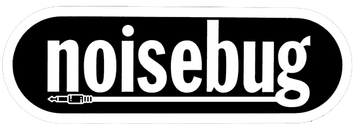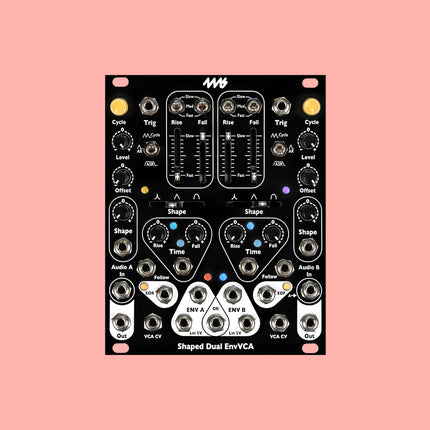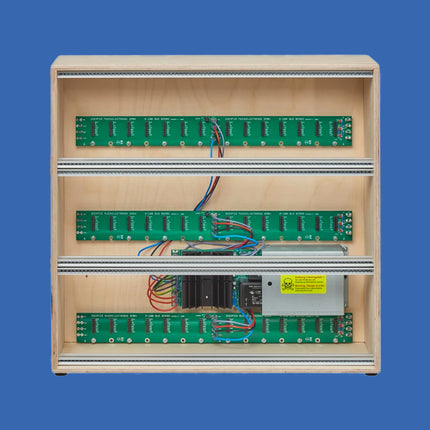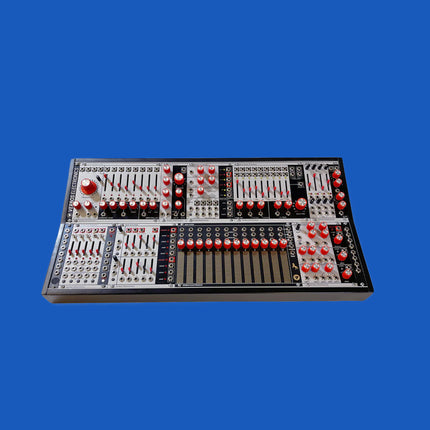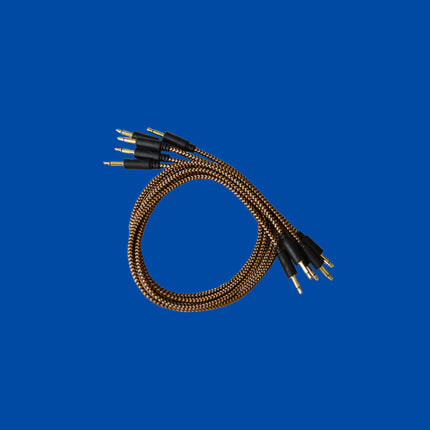Eurorack [Overview]
Eurorack is a modular synthesizer format originally specified in 1995 by Doepfer Musikelektronik. It has since grown in popularity, and as of 2022 has become a dominant hardware modular synthesizer format, with over 15,000 modules available from more than 1000 different manufacturers ranging from DIY kits and boutique, cottage-industry designers to well-known, established synth mass-manufacturers like Moog and Roland.
Compact size, 3.5mm mono jacks and cables for patching all signals, and lack of a visual or sonic aesthetic defined by one manufacturer sets Eurorack apart from other modular synthesizer formats, and these factors have contributed to the popularity of Eurorack among both manufacturers and musicians.
Before Eurorack, in the late 1970s, several modular systems based on the industrial “Euro” card frames appeared:
Elektor Formant (3U or 6U × 7HP, 3.5 mm jacks, 31-pin bus, ±15 V)
BME PM10/Axiom (3U × 8HP, RCA/Phono jacks, 31-pin bus, ±15 V)
The Synton 3000 (3U × 8HP, 4 mm “banana” jacks, ±15 V) was of similar format, but constructed more like a modern Eurorack synth.
By the late 1980s, these had all ceased production.
Dieter Döpfer built some Formant modules before producing his own systems. His Voice Modular System from the early 1980s was a Eurocard-based "modular" (the modules were non-patchable voice cards etc.) polyphonic synth, but the front panels look very similar to the later A100 modules.
In 1996, Doepfer Musikelektronik released the first Eurorack-format modular synthesizer system, the Doepfer A-100, followed by successive new series of compatible modules in 1997 and 1998. In the UK, Analogue Systems had been independently developing a very similar format, with small technical differences such as the power connectors. Analogue Systems would later change their products to offer Eurorack compatibility.
In the mid 2000s, other manufacturers such as Cwejman, Make Noise Music and TipTop Audio adopted Doepfer's Eurorack format and started designing and manufacturing compatible modules.
By 2013, the Eurorack format had gained in popularity. Music technology journalists estimated that there were already at least 80 manufacturers offering over 700 modules, greatly expanding the musical possibilities available from a Eurorack system to include sampling and sample manipulation, West-coast-style wavefolding, DSP-based effects and more.
In the mid 2010s, increasing interest in Eurorack modulars prompted large, well-known music technology manufacturers to start producing Eurorack-compatible equipment aimed at this new market. In addition to modules, manufacturers like Arturia started producing outboard devices such as the Beatstep and Microbrute designed to be able to communicate with Eurorack modular synthesizers via 3.5 mm jacks transmitting control voltages. In 2015 Moog released the Mother 32, a Eurorack-compatible semi-modular synthesizer.
By the end of fall 2018, the ModularGrid website included more than 316 manufacturers.
